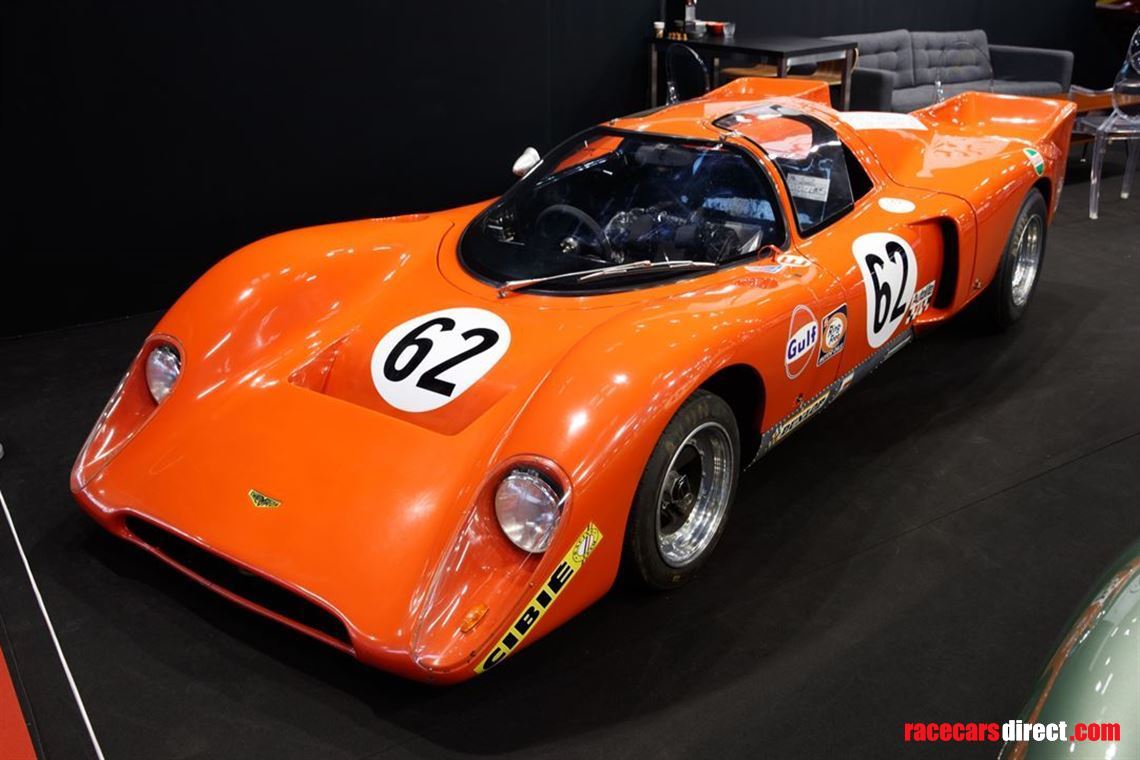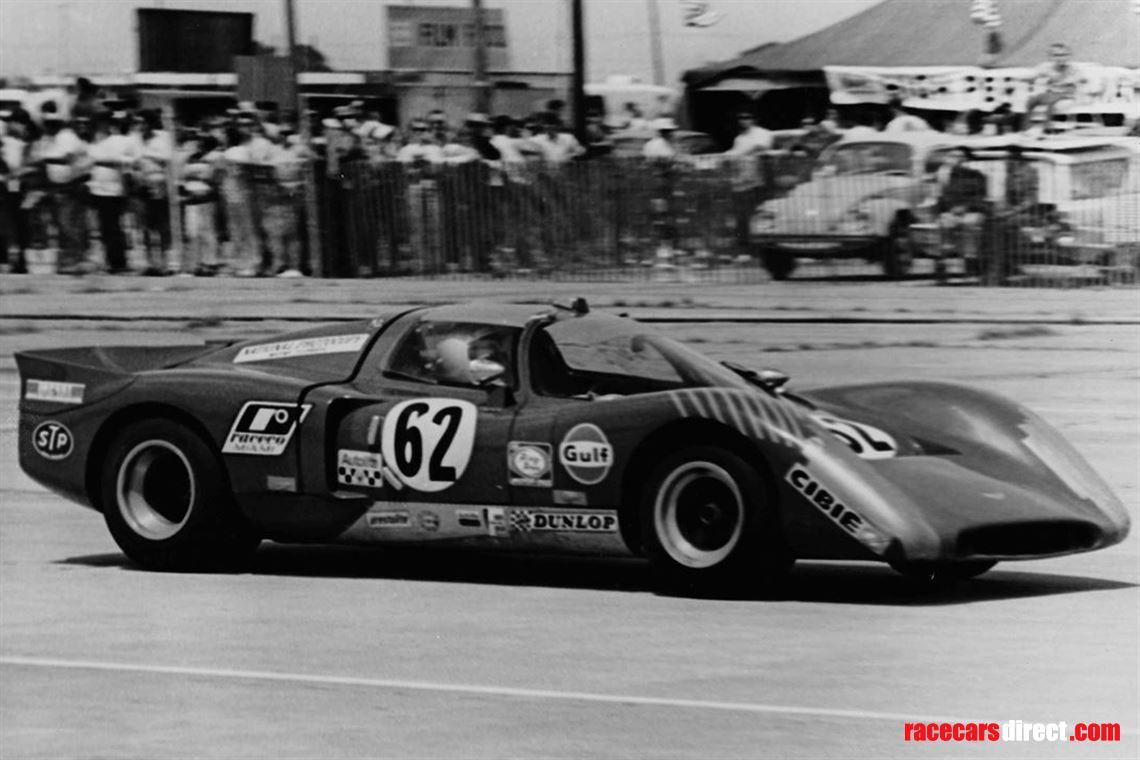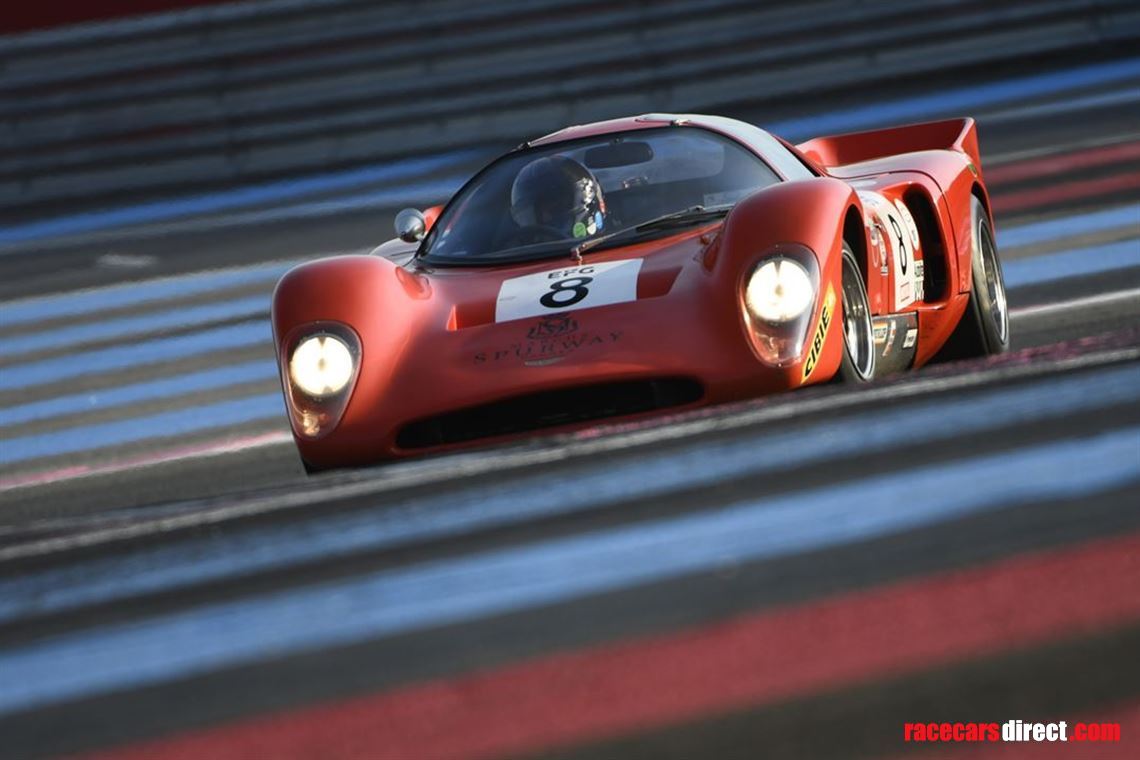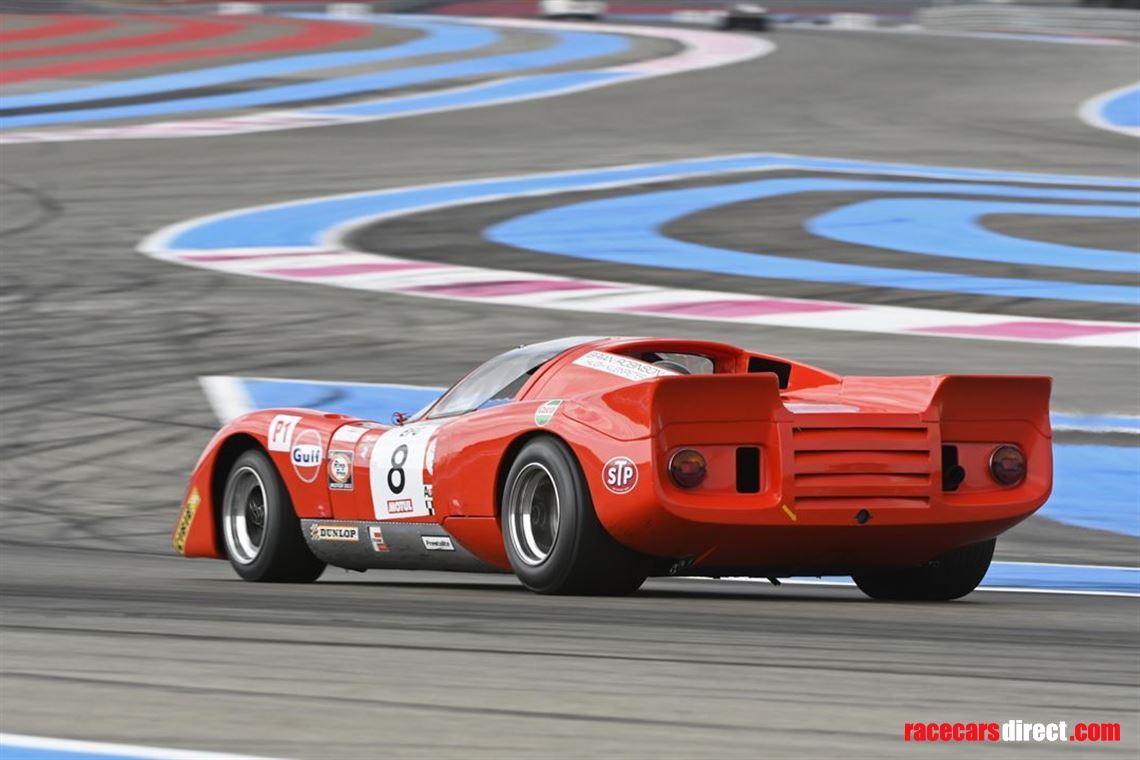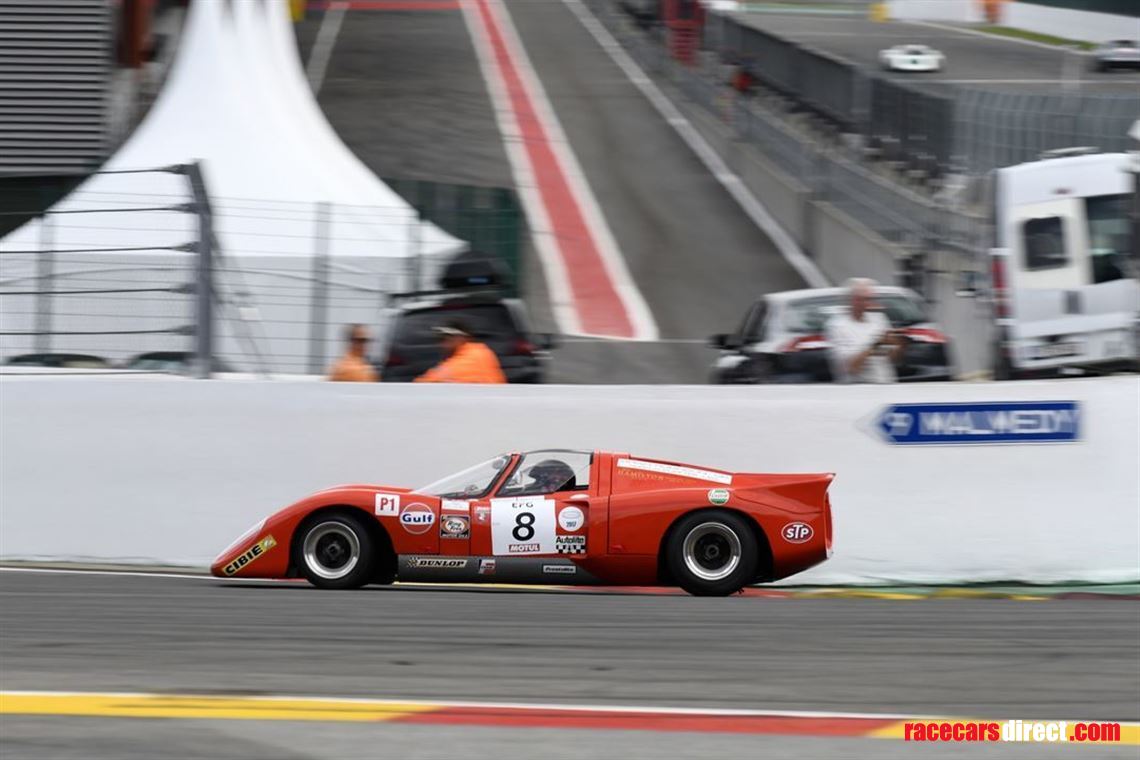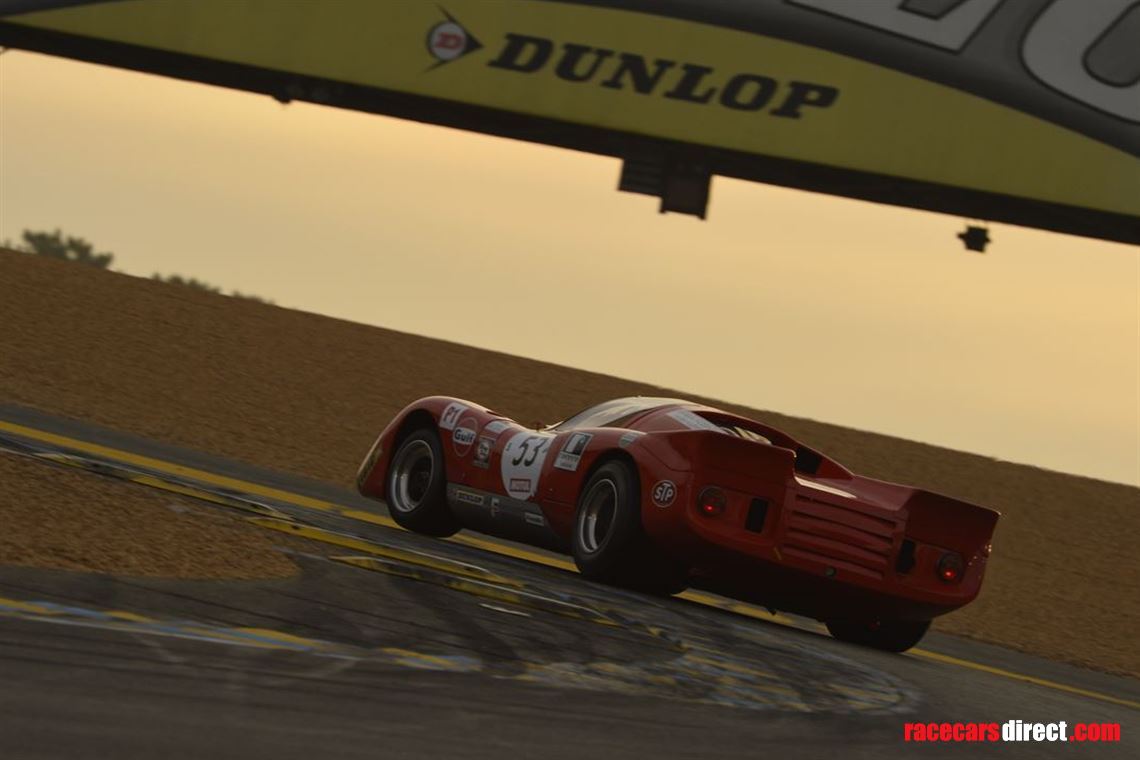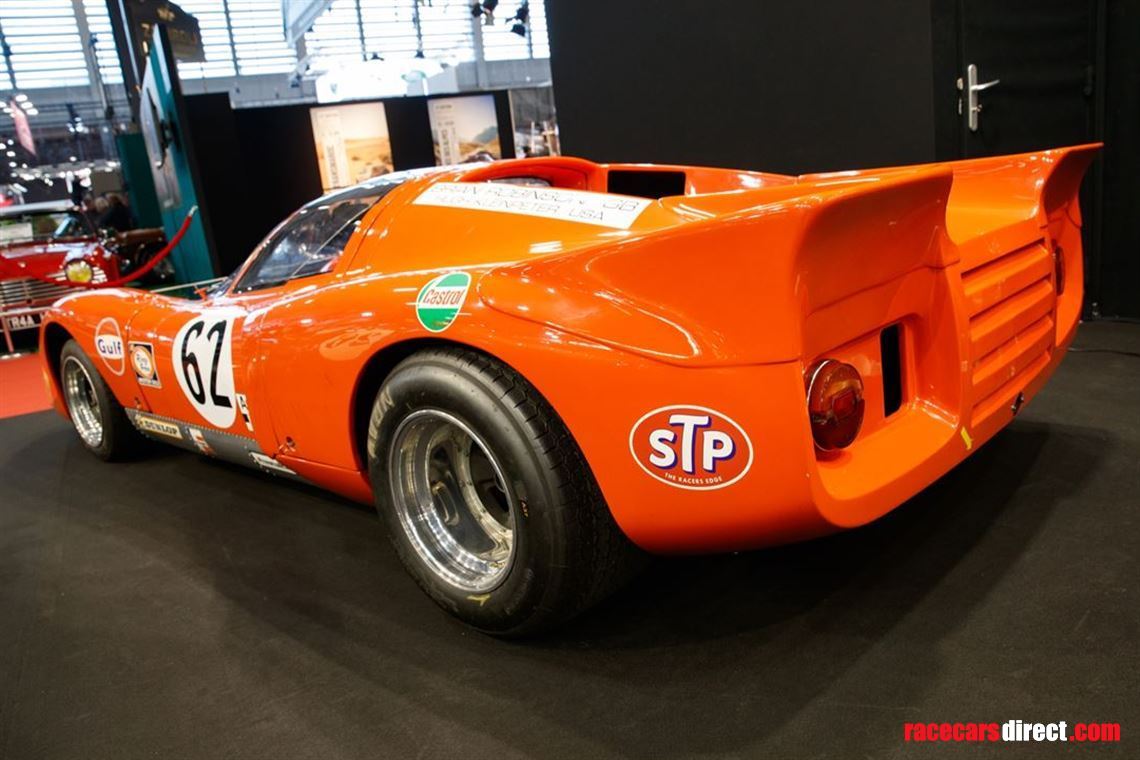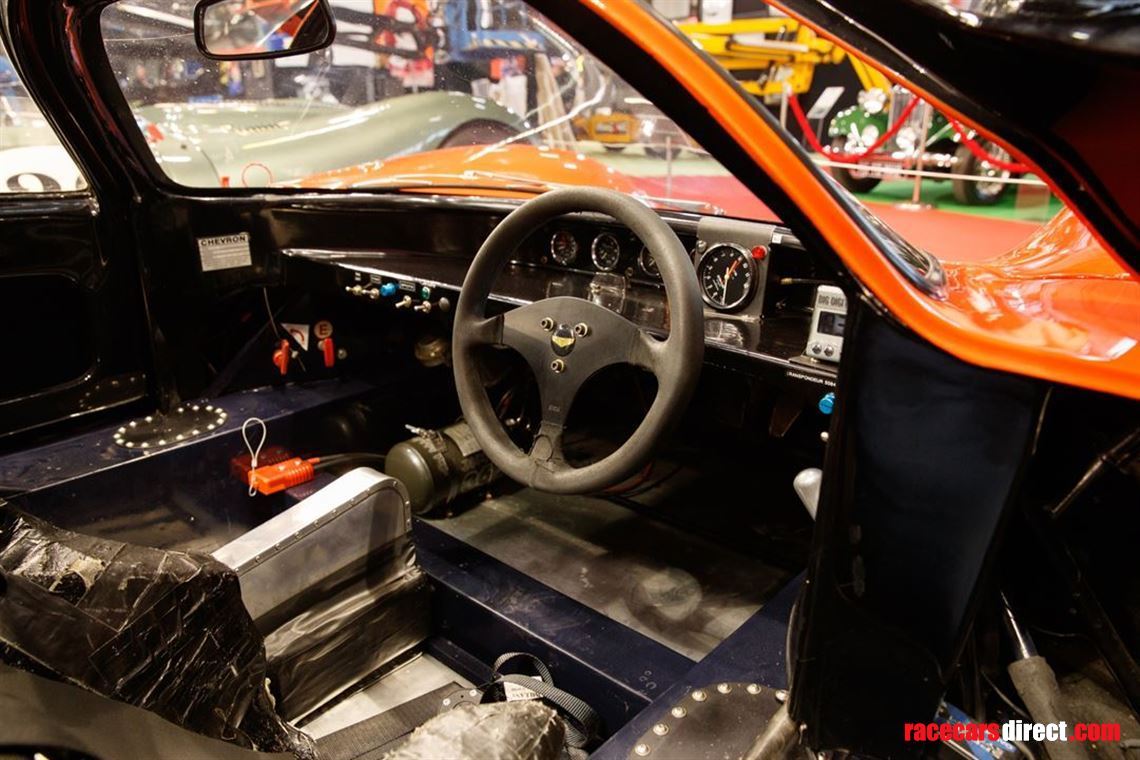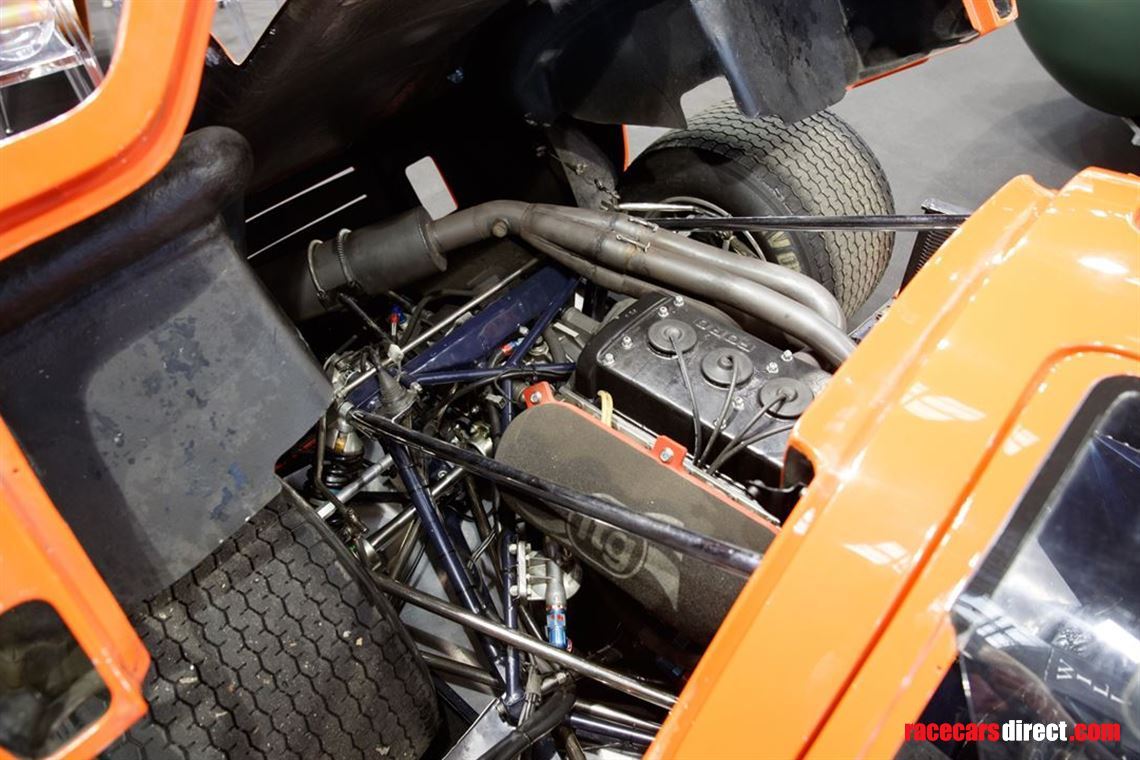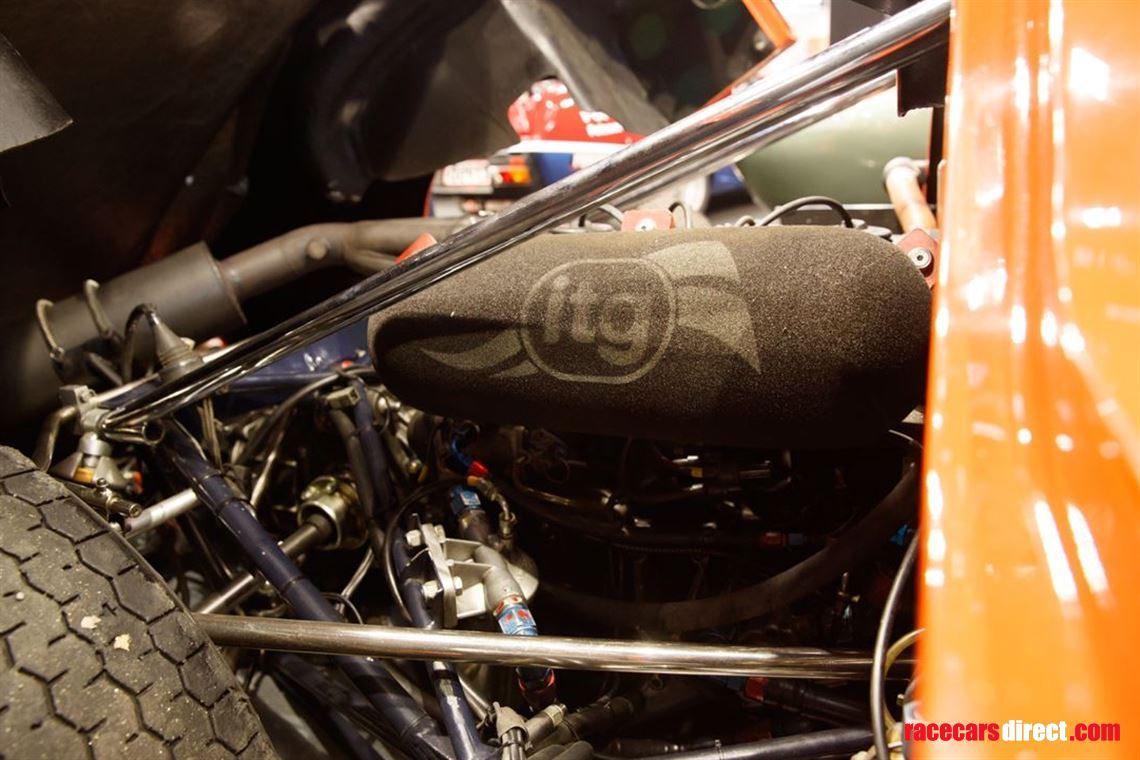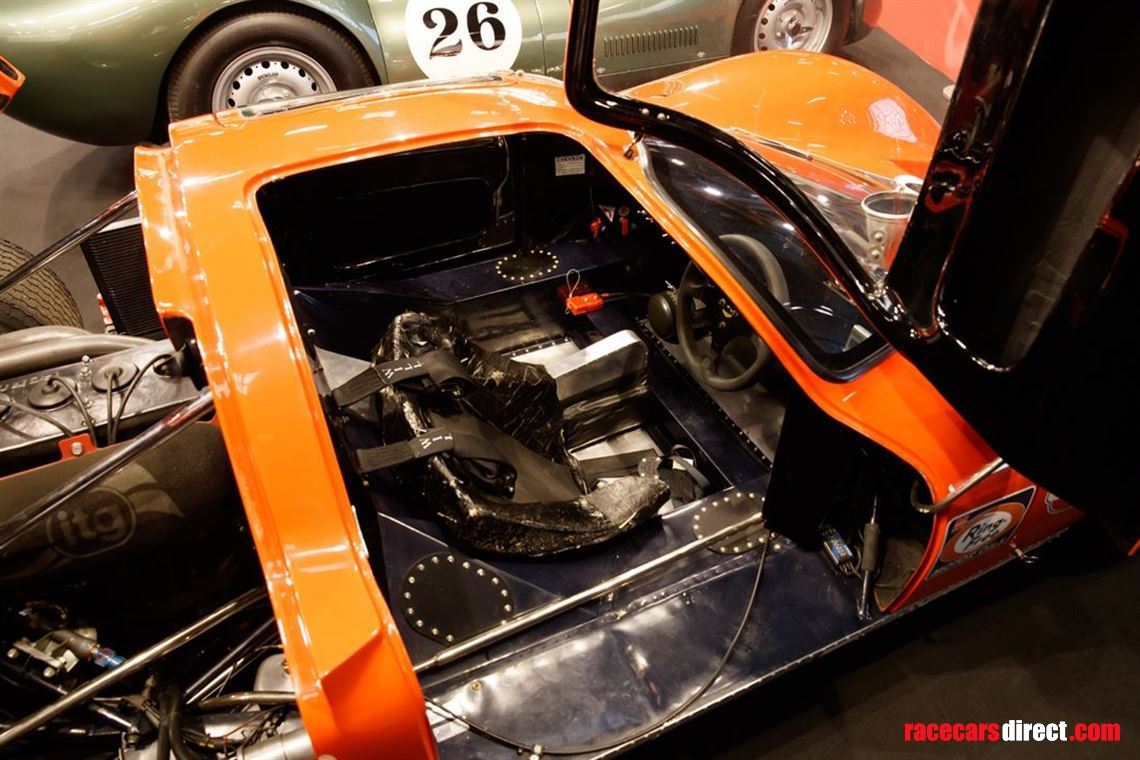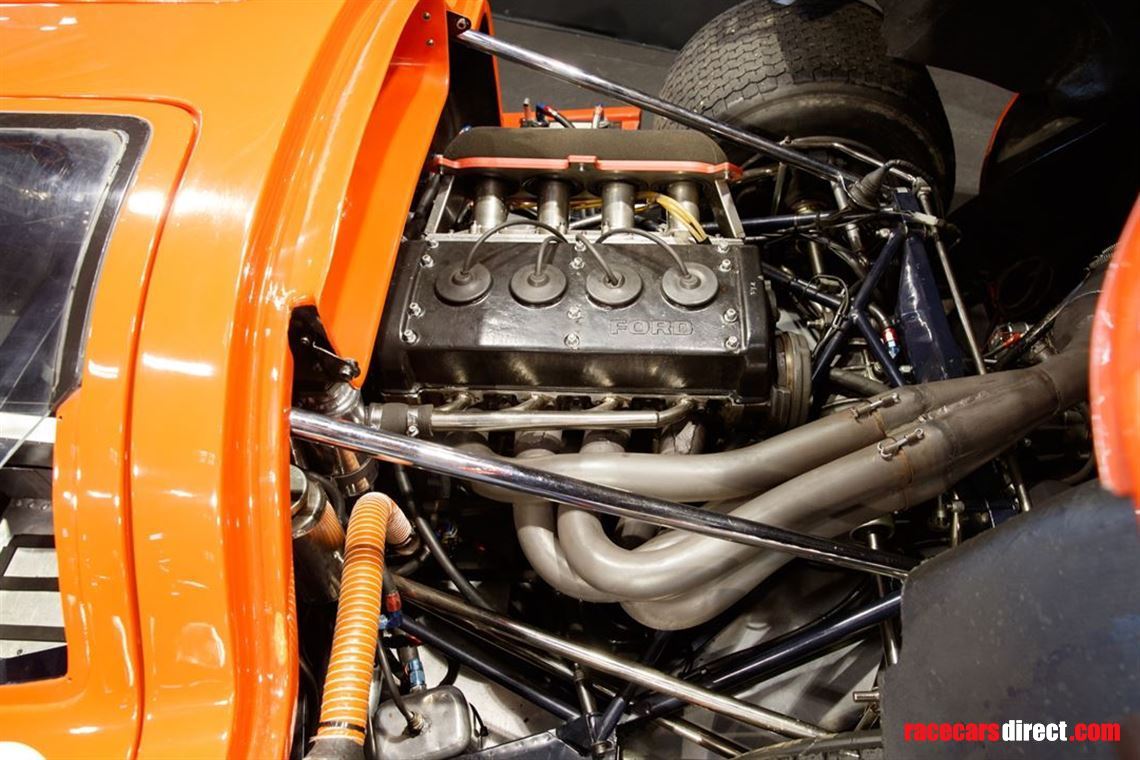Race Cars

£ POA
1970 CHEVRON B16 - SOLD
This is now SOLD. Search for similar items.
Description:
In keeping with the other cars produced by Chevron (from the 1965 B1 to the B65 built for the Group C category C2), the B16 was a truly emblematic car. It has its place in the history of the English craftsmanship of its time as a work of art - a car designed to embody lightness and finesse, and one that also chalked up numerous successes. Ascott Collection is now offering the Chevron B16 chassis # DBE04 for sale, one of the most reliable and fastest of the Chevron B16s, fully ready for racing: an authentic chassis built in 1970, with outings in particular at the 24 Hours of Daytona and the 12 Hours of Sebring, as attested by its fully documented history.
The Chevron B16, tailor-made for Group 6
The Chevron B16, designed for Group 6 competition, saw the light of day in 1970. This category was reserved for prototypes, with no minimum production required. Derek Bennett saw in it an opportunity to impose his name internationally and, above all, a way to capitalize on his previous creations, from the Chevron B8 to the single-seater Chevrons (such as the B9 and the B17, both designed for Formula 3 racing).
The B16 caught the eye right from the start. Carefully designed, it attracted attention with its low-slung body. The Chevron B16 was no higher than the roll bar of the Formula 3 cars that this true craftsman was building at that time. Derek Bennett made full use of the construction and design methods he already knew and did not try to revolutionize his winning recipe. The B16 was simply a more ingenious, optimized Chevron. The chassis took the shape of a shallow multi-tube frame, similar to Maserati's "birdcages". The riveted and glued body was made of aluminium, and was taken directly from the world of aviation. It also incorporated steel of different thicknesses.
The central section was made up of two tubular sub-sections bolted to the covered part of the frame. It was therefore not a true monocoque, a fact that speeded up faster repair work after an accident. This solution was chosen by Derek Bennett so as to be able to quickly offer an alternative solution to his customers of the time. There was no need to wait for a full new body to be built or to order a new chassis. It was a smart solution, similar to that proposed by Bruce McLaren on his Can-Am cars.
The Chevron B16 incorporated several other good ideas: the mounting of the oil reservoir at the front partially compensated for the weight of the driver. The doors had inbuilt intake ducts to cool not only the oil and the rear brakes, but also the driver. At high speed, the atmospheric pressure inside the cockpit caused small vents to open, thus allowing fresh air to flow through the cockpit itself. Driving in a nicely cool cockpit is always better than in an overheated cockpit, is it not?
Originally powered by a BMW engine (in the still-in-development prototype version), the Chevron B16 was subsequently fitted with a Cosworth FVA engine (renamed FVC). Later, one Chevron B16 was fitted with a Mazda Wankel engine, becoming the first car to line up on a starting grid with a rotary engine... thus heralding the 1991 victory!
An authentic Chevron B16 with a well-known history
The Chevron B16 # DBE04 was part of the first series of nine Chevron B16s fitted with the Cosworth FVC engine. Chassis DBE04 was the first car to be built in 1970, the three previous ones having been built in 1969. A total of 23 Chevron B16s were assembled ... before new models came into existence at the end of the 90s, with the approval of the owners of the Chevron brand. It should also be noted that a number of B16s returned to the factory in 1972 to be converted into B21s or B23s, with no roofs ... before (sometimes) subsequently receiving the reverse treatment.
This explains why there are today about fifty Chevron B16s to be found in the world, sometimes with the same chassis numbers and rather vague histories.
The history of the Chevron B16 # DBE04 is crystal clear, well-known and fully documented
It all began at the 24 Hours of Daytona in 1970. Entered by Chevron Cars, the car sported No. 37 but failed to finish due to injection problems. Its owner Brian Robinson then entered it for the 12 Hours of Sebring. It raced as No. 62, but again failed to finish (accident).
After these complicated beginnings, the Chevron B16 managed to secure a fine 5th place at Silverstone in the British Sports Car Championship, which was reserved for cars in the 2-litre category. There were several Chevron B16s at the start of the race, but it was a Lola T210 (driven by Jo Bonnier) that won it. The car was then engaged at Crystal Palace, finally finishing in 3rd place. Brian Robinson spent a studious summer of 1970 and entered the car at Hockenheim (for the 2-litre European Championship) finishing in 10th position. He followed this up with an 8th place at Croft (an Interseries event) then a 4th place at the Jyllandsringen Grand Prix (in Denmark) and a 5th place at Brands Hatch, again in the British Sports Car Championship. It was an intense year of competition, the golden age of the B16s’ participation in the 2-litre category.
In 1971, Brian Robinson's results were even better. With his fellow countryman Barrie Maskell as partner, he raced in the 1,000 km of Brands Hatch, with a 13th place finish. Then the European season brought several Top 10 places, for example at Oulton Park (4th), Thruxton (7th), Silverstone (8th) and Croft (7th). The Chevron B16 was also to be seen at the Trophy of Auvergne on the Charade Circuit, lined up against a number of Lola T210s and T212s, Matra MS660s and the new Chevron B19s, finishing in a fine 10th place. Brian Robinson treated himself to one final race with his Chevron B16 in October 1971, at the 1,000 km of Paris (teamed up with Jean-Louis Lafosse). Finishing 11th after starting off in 17th position, the duo was up against several Porsche 917Ks and 917 Spyders and also Ferrari 365 GTB/4s.
A life between the United States and England
Brian Robinson sold the Chevron B16 C-DBE04 in 1971 to John White of the USA who converted the coupe to spyder configuration. John White raced it in coupe and then spyder form from 1971 until late 1974 when Paul Worcester purchased it from John White. Paul Worcester raced it in the North Est USA from then until 1977. He had it stored until selling it to Mike Gue in early 1982 still in spyder form. Then it came from Ian Gilles to R Skeels in 1983 and to Richard Budge in 1985. This mining entrepreneur had the distinction of being nicknamed "King of Coal". He kept the car for 14 years, from 1985 to 1999 and its livery changed to blue, with the car being known as "Blue Budge". When Michael Schryver bought the car in 1999, he commissioned a specialist (Simon Hadfield) to restore it to its original configuration. During the restoration work, another body was acquired but never used. It is being offered with the car. It should be noted that the original chassis has not been tampered with, modified or cut, even when the car was in its Spyder configuration.
Michael Schryver had the car painted dark green and entered it for historic racing events, in which it won numerous victories. In 2004, Michael Schryver and Lord Laidlaw competed in the 2004 Le Mans Classic. The car was sold to Lord Laidlaw in 2003. During this period, it was given the grey-striped Burgundy livery of the Lord Laidlaw team cars and Simon Hatfield continued to maintain the car. It was subsequently acquired by Paul Knapfield, at the London RM Auction in 2013. He had it repainted in its 24 Hours of Daytona livery (orange / red) and sold it in 2014 to the current owners. It then competed in Classic Endurance Racing 1 (CER) and in the Le Mans Classic twice. The well-known Swiss workshop Burgol Racing Technology was in charge of maintaining and preparing the Chevron B16, with the engine being entrusted to Geof Richardson. The car’s papers include the invoices that attest to the car’s regular maintenance. The FVC engine was overhauled in September 2017 and has only had one race since then. The four tanks were replaced in February 2018. The car is ready to race and is being sold with a large set of spare parts.
In just a few years at the end of the 60s, Derek Bennett made a mark in particular with his B8 and the B16, which quickly became the perfect car for 2-litre competitions. In England, at every race weekend dedicated to sport-prototypes, a Chevron B16 was necessarily present! The car being offered for sale here has the distinction of having started its career in the United States, where it could boast two participations in legendary endurance races, the 24 Hours of Daytona and the 12 Hours of Sebring. It is an authentic car, with a documented history that makes it one of the most sought-after of all Chevron B16s.
Price upon request

